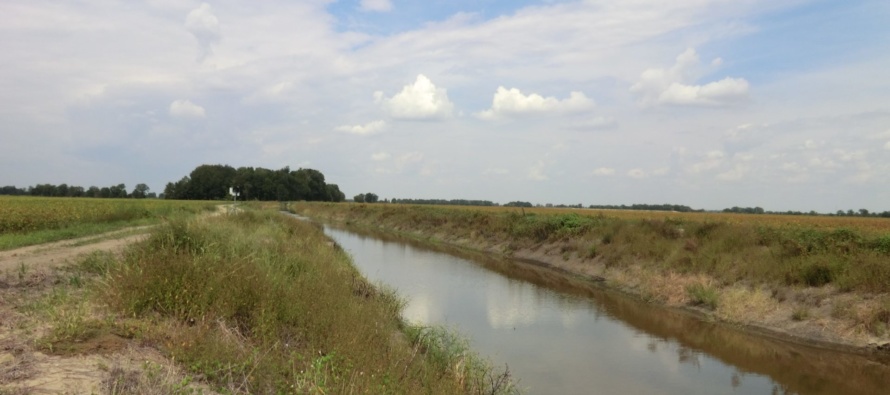Trapping Nutrients in the Landscape

Related Articles
- Fertilizing Cotton with Poultry Litter 5
- Spring Nitrogen Fertility Suggestions for Wheat 0
- Micronutrients for Mississippi Crop Production 4
Latest Tweets
Photos courtesy of Dr. Mary L. Tagert
The third part of Avoid, Control, and Trap agricultural environmental stewardship practices for nutrients and sediment is trapping them, literally keeping them on the land, reducing excess inputs to water bodies. Best Management Practices (BMPs) that trap nutrients and sediment include buffer strips, riparian stream borders, field borders, tail water recovery systems, constructed (or reconstructed) wetlands, or sorbing materials.
Appropriate trapping BMPs to employ in a field or on a farm are site-specific decisions, like the avoiding and controlling BMPs. Soil types, slopes, climate, crops, nutrient management history, relevant cost-share programs, and distance to surface water are considerations when considering and implementing individual or combinations of BMPs.
These trapping practices often require an investment in land area; they occupy physical space in addition to invested management, time, and capital. The profits from the lost production area may require tradeoffs to account for these areas removed from production. Federal cost-share programs often target offsetting this lost opportunity cost. Producers should work with their local Soil and Water Conservation District and Natural Resource Conservation Service to explore what opportunities may be available in their county.
Just as with human food and beverages, sometimes a good thing can cause issues down the road and management may have to address another type of tradeoff. Buffers are effective at trapping nutrients and sediments when properly designed. However, phosphorus (P) trapped by them may reach biogeochemical saturation in the surface layer where P can be released into runoff water moving over the surface.
To reiterate a recent theme of these conservation posts, there is no ‘one size fits all’ option. If these trapping practices are appropriate for the situation, they can be part of an overall plan for nutrient and soil management that is practical for managing soil and nutrient resources, business goals, and farmer motivations. Farmers should work with their trusted technical and financial advisers to implement these plans.
The assistance of Drs. Beth Baker, Mike Cox, Keri Jones, and Mary L. Tagert is greatly appreciated.





Let me tell You a sad story ! There are no comments yet, but You can be first one to comment this article.
Write a comment